I was absolutely floored by this tiny quote from Zora Neale Hurston’s 1928 field interview with Cudjoe Lewis, who was one of the last known survivors of the last slave-ship to come to the United States. He arrived in the US from what is now Benin in 1859 or 1860, smuggled in on the Clotilde at the age of 19. His given name was Kossula.
“I want to know who you are and how you came to be a slave; and to what part of Africa do you belong, and how you fared as a slave, and how you have managed as a free man?”
His head was bowed for a time. Then he lifted his wet face: “Thankee Jesus! Somebody come ast about Cudjo! I want tellee somebody who I is, so maybe dey go in de Afficky soil some day and callee my name and somebody dere say, ‘Yeah, I know Kossula.’ ”
Hurston spent three months interviewing Kossula, and even longer trying to get his history published. Because of her training an anthropologist she refused publishers’ demands that she rewrite Kossula’s vernacular testimony. 87 years later, it is being released for the first time, and I just bought it.
The Last Slave [vulture]
Barracoon: The Last Black Cargo, by Zora Neale Hurston, drops May 8 [amazon bookshop.org]
[This is where I originally expected this quick post to stop.]
Kossula was a leader of the community of Clotilde survivors who after attempting to return to Africa, created a settlement outside Mobile, Alabama called Africatown. In a 1914 book called Historic Sketches of the South, Emma Roche Langdon recounted the stories of the Clotilde’s voyage, the survivors, and their descendants. She spelled his name Cudjoe Kazoola Lewis.
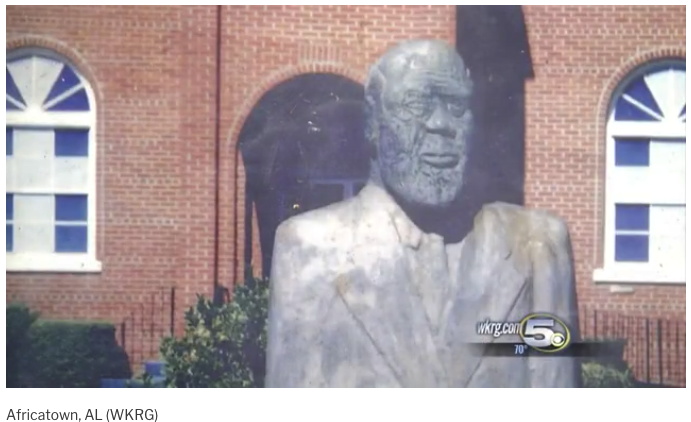
In 1959, on the 100th anniversary of the Clotilde‘s arrival, the Progressive League of Plateau erected a memorial to Cudjoe Kazoola Lewis in front of the Union Baptist Church. The monument was created by Henry Williams, “a welder and history buff”, which is what they call someone who also saved and preserved the Africatown cemetery. On a pyramid of bricks made by Clotilde survivors sat a lengthy bust of Lewis by Charles Rhodes, a “young understudy” of Williams.
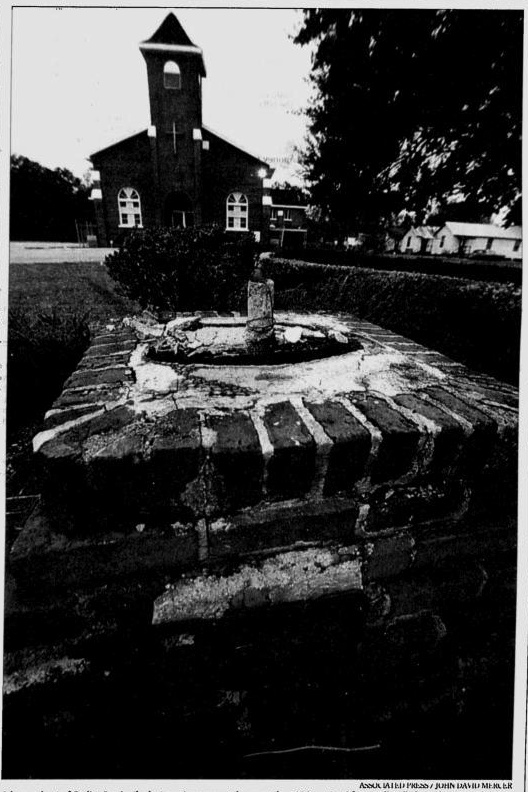
The original was carved in wood, to be cast in bronze. When the bronze bust was ripped off the base and stolen in 2002, the pastor said it had been in front of the church for “about three decades.” Was he off by 15 years, or had it taken until the 1970s to make the cast of Rhodes’ sculpture?

In 2008 a new, similarly shaped sculpture was unveiled, though this picture from a local newscast shows it next to a wall, not on the brick pyramid, because it was installed at the Africatown Welcome Center alongside a bust of John Smith, a mayor of the nearby town of Prichard. The sculptures were donated by two filmmakers from Africa, Thomas Akodjinou from Benin and Felix Yao Amenyo Eklu from Togo, in 2007.
On his blog Akodjinou honored John Smith for his involvement in the Alabama Benin Trade and Economic Cooperation Forum, which saw Africatown as an historic symbol of reconciliation between the two interconnected cultures.
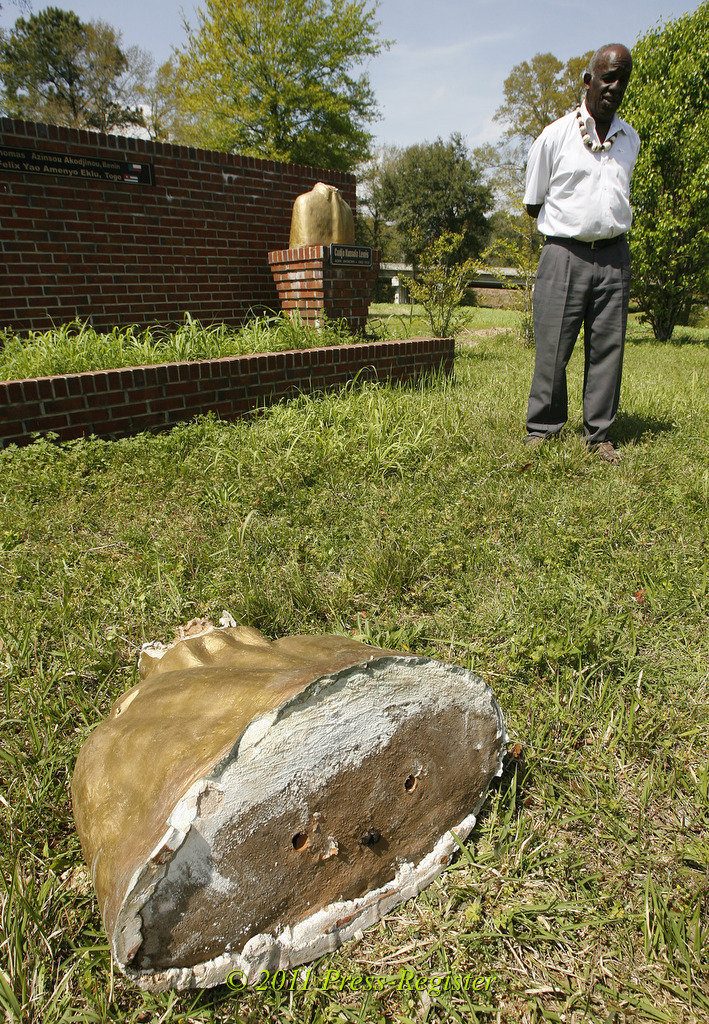
In March 2011, both sculptures were vandalized, with their heads ripped off. The sculptures were originally described as marble, but from the look of this painted and chipped base, I am doubtful.
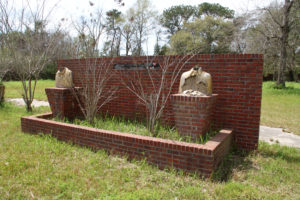
The headless busts were still visible in 2016 when Belgian artist Maarten Vanden Eynde visited Africatown. His account is disheartening, if not downright harrowing. Besides the historic cemetery, which is sinking, many of the structures and homes are run down or abandoned, and the area is threatened by surrounding industrial redevelopment. [Tho tbh, it looks kind of typical on GSV from 2011-2017.]
In 2016 sculptor April Livingston launched a GoFundMe to make a new bust, just the head this time, to be cast out of iron. It was bolted to the base in February 2017, when she promised the local news that she could cast a million more. Me, I’m most interested in the history of the previous three.
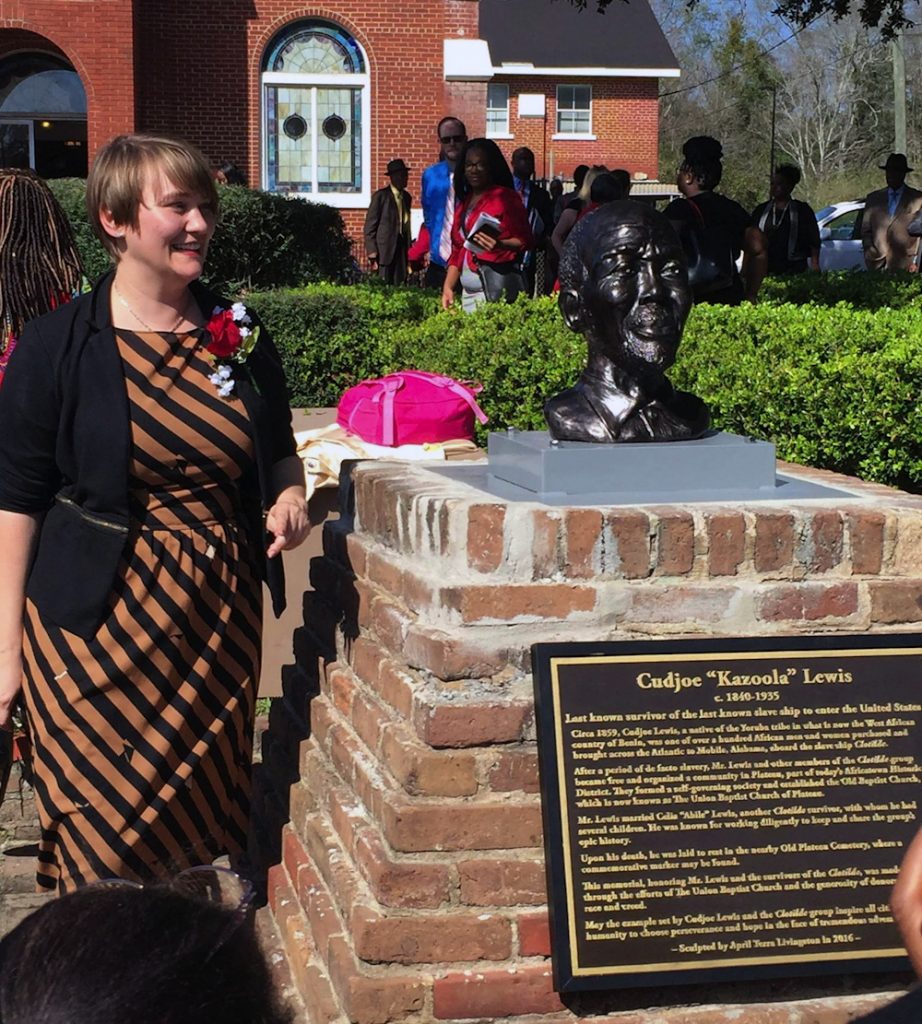
Historic Sketches of the South (1914), by Emma Roche Langdon [archive.org]
On her 1928 trip Hurston filmed Cudjo Lewis and other AfricaTown residents. [youtube]
New Cudjoe Lewis bust dedicated (the 3rd or 4th, depending) [wkrg]
A few months ago, a reporter [thought he] found the wreckage of the Clotilde [al, thanks wb]
May 2018 UPDATE: WNYC’s On The Media devoted an entire show to Africatown and the importance of preserving and telling its founders’ stories. [wnycstudios.org]
